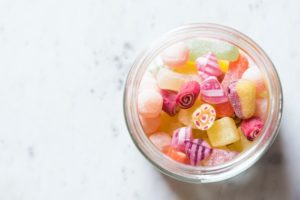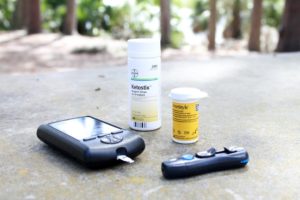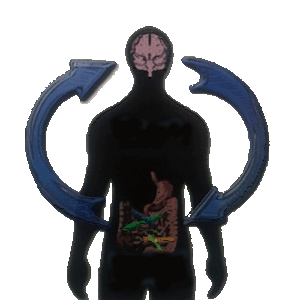High-fructose corn syrup (HFCS) is an artificial sugar made from corn syrup that quietly and grimly entered the food supply decades ago. Today HFCS is ubiquitous in a wide variety of foods, including pasta sauces and salad dressings.
Since the late 1980s, High Fructose Corn Syrup has replaced regular table sugar, honey, and similar sweeteners. Manufactured mostly from genetically modified corn, high fructose corn syrup is definitely not natural and definitely not healthy. Chances are all of us have consumed high fructose corn syrup, knowingly or unknowingly. Some of us may do so multiple times within a day. It’s hard to escape this questionable form of sugar that’s found in cereals, baked goods, ultra-processed foods, juices, and soft drinks, among an array of other commonly consumed foods and drinks.
This commonplace additive silently increases our risk of obesity, diabetes, hypertension, and atherosclerosis. 1,2 Many experts believe that added sugar and HFCS are key factors in today’s obesity epidemic.3,4
 What Is High Fructose Corn Syrup?
What Is High Fructose Corn Syrup?
Put simply it’s a sweetener derived from corn-starch.
Corn-starch is composed of a chain of glucose (simple sugar) molecules joined together. Corn syrup, which is basically 100 percent glucose, comes from the breakdown of corn-starch into individual glucose molecules.
In order to create high fructose corn syrup, enzymes must be added to corn syrup to change some of the glucose into another simple sugar called fructose. The enzymes, alpha-amylase, and glucoamylase, used in HFCS processing have been genetically modified to improve their heat stability for the production of HFCS.5
According to the U.S. Food & Drug Administration, most high fructose corn syrups contain either 42 percent or 55 percent fructose.6 The rest of the HFCS is glucose and water. HFCS 42 is typically what’s used in cereals, processed foods, baked goods, and some beverages. HFCS 55 is used mainly in soft drinks. However, some HFCS contains up to 90 percent fructose!7
 High fructose corn syrup is also called glucose-fructose, isoglucose, and glucose-fructose syrup. Some people, especially the companies producing and using HFCS, like to say that it’s no different from regular sugar. But that’s just not true. HFCS contains more fructose than table sugar, which is a dangerous difference.
High fructose corn syrup is also called glucose-fructose, isoglucose, and glucose-fructose syrup. Some people, especially the companies producing and using HFCS, like to say that it’s no different from regular sugar. But that’s just not true. HFCS contains more fructose than table sugar, which is a dangerous difference.
Author Bill Sanda reports that in 1980, the average American ingested 39 pounds of fructose and 84 pounds of sucrose. By 1994, it was up to 66 pounds of sucrose and 83 pounds of fructose. Today, approximately 25 percent of our caloric intake comes from sugars, the larger portion being fructose. 8
Recently, big food companies have gotten wise to the unhealthy reputation their favorite ingredient has developed and have subsequently started re-labeling it under different names. Make sure to check the list of ingredients for all of these variations in its name: high-fructose corn syrup, natural corn syrup, isolated fructose, maize (a native word for corn) syrup, glucose/fructose syrup, isoglucose, and tapioca syrup (not from corn, but also fructose).
Why is high fructose corn syrup bad? The reasons are plentiful but for starters,
High fructose corn syrup is linked with the following health issues in both adults and children:
· Significant Risk of Weight Gain and Obesity
· Increased Risk of Developing Type-2 Diabetes
· Hypertension and Elevated “Bad” Cholesterol Levels
· Liver Damage
· Mercury Exposure
 9 Dangers of High Fructose Corn Syrup
9 Dangers of High Fructose Corn Syrup
1. Weight Gain
There is a lot of debate over high fructose corn syrup vs sugar. Many HFSC supporters want to stay that both are equally bad, but all sweeteners are not created equal when it comes to putting on unwanted pounds. A Princeton University study found that HFCS causes more weight gain than refined sugar does.
Specifically, animal subjects with access to high fructose corn syrup put on significantly more weight than those with access to table sugar, even when overall caloric intake was equal. Furthermore, long-term consumption of high fructose corn syrup was also shown to lead to abnormal increases in body fat, especially in the abdominal region, as well as an increase in triglyceride levels. According to researchers, this study provides insight into factors contributing to the rise of obesity in America.9
2. Cancer
With high fructose corn syrup found in so many foods and beverages, it’s no surprise that fructose intake has increased dramatically in recent decades. Research from 2010 published by the American Association for Cancer Research found that the fructose in HFCS promotes cancer growth, specifically pancreatic cancer.
This study actually found that cancer cells can readily metabolize fructose and induce rapid reproduction of pancreatic cancer cells. Researchers also found that fructose and glucose metabolism are very different, with fructose causing more negative health reactions than glucose. This research provides very good reason why cancer patients should not be given anything containing high fructose corn syrup and how avoiding HFCS can possibly disrupt cancer growth.10 When it comes to cancer prevention and treatment, clearly HFCS is an ingredient that should be aggressively avoided.
3. Fatty Liver and Liver Stress
Fructose is known to stimulate fat accumulation in the liver by increasing fat synthesis yet blocking fat breakdown. In order to chemically create high fructose corn syrup, glucose, and fructose, which are naturally linked together, become separated. When HFCS enters your bloodstream, the freed-up fructose travels directly into your liver and overwhelms your liver’s processing capacity. This then causes unhealthy fat production in your liver called lipogenesis. This can lead to fatty liver disease if more than 5 percent to 10 percent of the liver’s weight becomes fat. It doesn’t stop there, though. Having a fatty liver can lead to serious liver stress, liver damage, obesity, prediabetes and type 2 diabetes. 11
One of several animal studies shows that excessive fructose consumption is associated with dyslipidemia and increased fat deposits in the liver. Dyslipidemia, or having high blood levels of cholesterol, triglycerides, or both, is a major risk factor for coronary heart disease. This study concludes that the findings support limitation of excessive fructose addition in beverages in order to counteract the current epidemic of obesity and type 2 diabetes in industrialized countries like the U.S.12
4. Increased Cholesterol Levels
High fructose corn syrup intake is linked to high cholesterol levels. A study published in the American Journal of Clinical Nutrition found that only two weeks of moderate consumption of high fructose corn syrup caused cholesterol and triglycerides levels to rise.
 The study split 85 people with generally healthy lipid profiles into four groups. The first three groups consumed drinks sweetened with either 25 percent, 17.5 percent, or 10 percent high fructose corn syrup while the fourth group drank something sweetened only with aspartame. While I would never promote aspartame consumption either, the results showed that LDL or “bad” cholesterol for the aspartame group remained the same before and after the diet. However, for subjects who consumed HFCS-sweetened beverages for two weeks, the results were as follows: The 10 percent group on average went to LDL of 102 from 95, the 17.5 percent to 102 from 93, and the 25 percent group to 107 from 91. 13
The study split 85 people with generally healthy lipid profiles into four groups. The first three groups consumed drinks sweetened with either 25 percent, 17.5 percent, or 10 percent high fructose corn syrup while the fourth group drank something sweetened only with aspartame. While I would never promote aspartame consumption either, the results showed that LDL or “bad” cholesterol for the aspartame group remained the same before and after the diet. However, for subjects who consumed HFCS-sweetened beverages for two weeks, the results were as follows: The 10 percent group on average went to LDL of 102 from 95, the 17.5 percent to 102 from 93, and the 25 percent group to 107 from 91. 13
The lead author of the study, Kimber L. Stanhope, a research scientist at the University of California, Davis said, “It was a surprise that adding as little as the equivalent of a half-can of soda at breakfast, lunch and dinner was enough to produce significant increases in risk factors for cardiovascular disease. Our bodies respond to a relatively small increase in sugar, and that’s important information.” 14
 5. Diabetes
5. Diabetes
A lot of medical professionals think that fructose is better for diabetics than sugar, but every cell in the body can metabolize glucose. Fructose, on the other hand, must be metabolized by the liver. Fructose has been directly linked with diabetes, especially high fructose corn syrup, which contains a great deal of free-floating fructose. Unlike fruit, which contains fructose yet also has fiber and nutrients to positively affect fructose’s absorption by the body, high fructose corn syrup offers absolutely zero nutritional value. It’s just straight-up questionable sugar and calories, nothing else.
Recent data suggest that fructose consumption in humans leads to increased visceral fat accumulation, impairment in the regulation of fats in the blood (like cholesterol and triglycerides), and decreased insulin sensitivity. Why are these effects of fructose so concerning? All of these side effects have been associated with an increased risk of developing type 2 diabetes as well as cardiovascular disease. 15
A study published in the journal Global Health shows that countries that mix high fructose corn syrup into processed foods and drinks have higher rates of diabetes than countries that don’t use HFCS. Out of the 43 countries studied, approximately half had little or no high fructose corn syrup in their food supplies. In other countries, the HFCS content of foods was between about one pound a year per person in Germany to about 55 pounds each year per person in the U.S. The study found that countries using HFCS had diabetes rates about 20 percent higher than HFCS-free countries.16
6. High Blood Pressure
Fructose intake from added sugars is associated with blood pressure issues in humans. The goal of a 2012 study published in Metabolism was to compare the effects of soft drinks sweetened with high fructose corn syrup vs. sucrose (table sugar). In a randomized study, researchers had 40 men and women consume 24 ounces of either a HFCS- or sucrose-sweetened beverage. They then collected urine and blood samples over the next six hours to measure blood pressure, heart rate, fructose and several other metabolic biomarkers.
 The researchers found that systolic blood pressure maximum levels were higher when HFCS-sweetened beverages were consumed compared to sucrose-sweetened beverages. Overall, they found that compared with sugar, high fructose corn syrup leads to greater fructose exposure to the entire body and significantly different acute metabolic effects. 17
The researchers found that systolic blood pressure maximum levels were higher when HFCS-sweetened beverages were consumed compared to sucrose-sweetened beverages. Overall, they found that compared with sugar, high fructose corn syrup leads to greater fructose exposure to the entire body and significantly different acute metabolic effects. 17
Research has shown that consuming 60 grams of fructose can increase systolic blood pressure in humans, but this is not seen in subjects given the same exact dose of glucose. In another study, overweight men were given 200 grams of fructose daily for two weeks, and it was observed that they maintained a significant rise in ambulatory blood pressure (blood pressure as you move around) during that time. Hypertension in response to fructose intake appears to be brought about by increased sodium absorption in the intestine, inhibition of systemic blood vessel function, and stimulation of the sympathetic nervous system. Fructose-induced increases in uric acid levels in the body may likely play a part as well. Studies in experimental animals have also confirmed that fructose can increase blood pressure.18
7. Heart Disease
The fact that HFCS raises blood pressure is reason enough to make it extremely bad for your heart. High blood pressure is part of a cluster of dangerous health issues called metabolic syndrome, which increases your risk for heart disease, stroke, and diabetes. Research shows that in subjects who had healthy glucose tolerance and those who had unhealthy glucose tolerance, fructose caused a general increase in both the total serum cholesterol and in the low-density lipoproteins (LDL) in most of the subjects, which puts a person at risk for coronary heart disease.
According to a 15-year Harvard study, participants who took in 25 percent or more of their daily calories as sugar were more than twice as likely to die from heart disease as those whose diets included less than 10 percent added sugar.19 This sugar intake could be from HFCS or from another source of sugar, but it’s why we need to eliminate HFCS from our diets and keep overall sugar intake, even from truly natural sources, at a healthy, low level.
 8. Leaky Gut Syndrome
8. Leaky Gut Syndrome
We now know so many health issues begin in the gut and HFCS consumption plays a role here. Leaky gut syndrome is also referred to as increased intestinal permeability. When you have this condition, the “net” in your digestive tract gets damaged, which allows proteins (like gluten), bad bacteria, and undigested particles to pass into your bloodstream.
Studies performed at the Children’s Hospital Oakland Research Institute found that free fructose from HFCS requires more energy to be absorbed by the gut and soaks up two phosphorous molecules from ATP (our body’s energy source). This depletes the energy fuel source in our guts required to maintain the integrity of our intestinal linings. Large doses of free fructose have been shown to literally punch holes in the intestinal lining, creating a leaky gut.20
Once these holes in the lining exist, it’s very easy for unwanted toxins and food to enter your bloodstream. These invaders are not meant to be in the bloodstream, so they trigger inflammation in the body. Inflammation is at the root of so many health problems including obesity, diabetes, cancer, heart disease, dementia, and accelerated aging.
9. Increased Mercury Intake
Multiple studies have found alarming amounts of mercury in products containing high fructose corn syrup, which can contribute to dangerous mercury poisoning. We know that mercury is extremely toxic to our bodies, and it’s especially disturbing for a developing child to be exposed to mercury. Mercury has negative effects on the liver, kidneys, brain, and other internal organs.
In a study published in Environmental Health, mercury was detected in almost 50 percent of samples of commercial high fructose corn syrup. Another highly concerning study by the Institute for Agriculture and Trade Policy found mercury in about a third of 55 popular brand name food and beverage products. These common products all had HFCS as the first or second-highest labeled ingredients.21
 Here Is A List of Popular Foods That Often Contain High-Fructose Corn Syrup.
Here Is A List of Popular Foods That Often Contain High-Fructose Corn Syrup.
Soft drink and Juice – Soda is well known for its high sugar content. One can of soda contains close to 50 grams of added sugar. That’s 13 teaspoons, which exceeds the daily limit of nine teaspoons of sugar for men and six for women. A great substitute for soft drink is mineral water – many brands are naturally flavoured with fruit and do not have any calories or added sugar.
While juice provides some nutrients and antioxidants, it’s a very concentrated source of sugar with little fibre. Although juice is naturally high in sugar, some companies sweeten it even more with HFCS. The amount of sugar in some juices is comparable to the amount added to soda. Some types of juice might even contain more sugar than soft drink.
Coffee Creamer – is big in the United States, less so elsewhere. It may seem harmless until you see the ingredients that get added to it. It’s typically made mostly of sugar in the form of HFCS, in addition to several other unhealthy ingredients. You are much better off drinking your coffee black or flavouring it with something healthier, such as milk, unsweetened almond milk, vanilla or a little heavy cream.
Energy Drinks and Sports Drinks – These types of beverages often seem like a hydrating quick fix to recover from a workout or energy slump. But don’t be fooled, as they are typically rich in HFCS and other ingredients that will do your body more harm than good. Water is a much healthier beverage choice, as it will increase your energy levels and quench your thirst without making you crash.
 Sweets and Lollies – Chocolate bars and sweets tend to have lots of sugar added in the form of HFCS, and it’s often listed as the first ingredient.
Sweets and Lollies – Chocolate bars and sweets tend to have lots of sugar added in the form of HFCS, and it’s often listed as the first ingredient.
Sweetened Yoghurt – Yoghurt is often advertised as a healthy snack. Companies claim that it’s low-calorie, nutrient-dense and high in probiotics. While it certainly can be healthy, most brands of commercial yoghurt, especially low-fat and fat-free yogurts, are nothing but sugar bombs. Furthermore, HFCS is often the sweetener of choice for these types of yogurts. A single serving of some flavoured, low-fat yogurts contains over 40 grams of sugar, which surpasses the daily limit9. Instead of buying yoghurt with added HFCS, opt for plain yogurt and add your own flavourings. Vanilla extract, cinnamon, cocoa powder and berries are great options.
Ice Cream – is supposed to be sweet, so it is always high in sugar and meant to be consumed in moderation. Many brands choose to sweeten their ice cream with HFCS.
Granola Bars, Cereal Bars, Nutrition Bars – Some seemingly healthy granola bars may contain more sugar than a chocolate bar. Granola consists of rolled oats combined with various other ingredients, such as dried fruit and nuts. Granola bars tend to be very sweet, as many companies choose to sweeten them with sugar or HFCS. The good news is that there are plenty of brands that sweeten their bars naturally. Always check the ingredients lists or make your own.
Cereal bars are a popular, quick and easy snack food. They may seem like a healthy choice for an on-the-go breakfast. However, like other types of “bars,” cereal bars tend to be high in added sugar, often in the form of HFCS. Always check ingredient lists and choose a brand without added sugar. Or, rethink your breakfast and eat something healthier in the morning.
Nutrition bars, also known as “energy-bars” or “health bars,” consist of high-energy ingredients and are meant to be supplemental. They are marketed as meal replacements for individuals who do not have time for a meal but need energy quickly, such as athletes. Unfortunately, HFCS is added to these quite often, which once again stresses the importance of always checking ingredient lists. The good news is that there are some brands that use only whole-food ingredients, and you can also make your own.
 Breakfast Cereal – Many cereals are advertised as healthy, but they are often heavily sweetened with sugar or HFCS. In fact, there are several cereals that contain more added sweeteners than many types of dessert. Some brands contain over 10 grams of sugar in only one serving. It’s easy for some people to eat more than the listed serving size, which can put them over their daily sugar limit right at their first meal of the day. Find a cereal without any added sugar or HFCS, or replace it with an even healthier option, such as porridge.
Breakfast Cereal – Many cereals are advertised as healthy, but they are often heavily sweetened with sugar or HFCS. In fact, there are several cereals that contain more added sweeteners than many types of dessert. Some brands contain over 10 grams of sugar in only one serving. It’s easy for some people to eat more than the listed serving size, which can put them over their daily sugar limit right at their first meal of the day. Find a cereal without any added sugar or HFCS, or replace it with an even healthier option, such as porridge.
Store-Bought Baked Goods – Many grocery stores have their own bakery sections with endless donuts, cookies and cakes unfortunately, HFCS is the sweetener of choice for many store-bought baked goods.
Salad Dressing – Just one tablespoon of fat-free French dressing contains three grams of sugar. Most people add much more than a tablespoon of dressing and could easily consume more than half of the daily limit of sugar in a single salad. To make up for the flavour that gets removed along with the fat, companies add sugar or HFCS to please your taste buds. It is important to always be sceptical of store-bought salad dressings, especially those advertised as low-calorie or fat-free. Your best bet is to make your own salad dressing with simple, healthy ingredients, such as olive oil, balsamic vinegar, and lemon juice.
Sauces and Condiments – Many of these products have HFCS listed as the first ingredient. Two items to be particularly cautious of are tomato sauce and barbecue sauce. Just two tablespoons of barbecue sauce contain 11 grams of sugar, while a tablespoon of tomato sauce contains three grams 22, 23. Always check ingredient lists for HFCS, and choose the brand with the least amount of sugar. Also, be sure to watch your portion sizes with condiments.
 Snack Foods – Processed foods, such as chips, cookies and crackers, contain HFCS more often than not. However, there are healthier brands available — you just have to look for those without added sweeteners. Whole foods, such as vegetables, fruits, nuts, and seeds, also make nutrient-dense alternatives to typical snack foods.
Snack Foods – Processed foods, such as chips, cookies and crackers, contain HFCS more often than not. However, there are healthier brands available — you just have to look for those without added sweeteners. Whole foods, such as vegetables, fruits, nuts, and seeds, also make nutrient-dense alternatives to typical snack foods.
Jam and Jelly – are always rich in sugar, but store-bought versions are more likely to contain HFCS. If you want to enjoy these condiments, look for a version with simple ingredients. You can often find locally made jams without HFCS at farmers markets or learn to make it on your own.
Frozen Foods – such as TV dinners and pizzas, have taken over grocery store aisles and they often contain added sugar, but many of them do in the form of HFCS. When shopping the frozen aisles, always check ingredient lists and choose foods without HFCS and other unhealthy ingredients.
Boxed Dinners such as macaroni and cheese, come in a box along with packages of powdered sauce and seasonings and often become a dietary staple due to their convenience. You simply add a couple of ingredients, such as water or milk, and cook it for a short period of time. HFCS is often added to these products, along with many other artificial ingredients. You are always better off cooking a quick meal for yourself made from real food.
 Breads – Many brands have added high-fructose corn syrup, which can be surprising because bread isn’t usually thought of as a sweet food. It is always important to double-check ingredient lists on bread labels.
Breads – Many brands have added high-fructose corn syrup, which can be surprising because bread isn’t usually thought of as a sweet food. It is always important to double-check ingredient lists on bread labels.
Canned or Tinned Fruit – Just one cup of canned fruit can contain up to 44 grams of sugar, which is over twice the amount found in a cup of whole, fresh fruit. To avoid HFCS, always choose fruit that is canned in its natural juice. Better yet, choose whole fruit so you don’t have to worry about any added ingredients.
In Summary
High-fructose corn syrup is an unhealthy ingredient that is added to all sorts of foods and beverages. Unfortunately, many of these foods are often mistakenly assumed to be healthy. Nothing could be further from the truth.
So how can you make sure you’re avoiding high-fructose corn syrup in your diet?
Eating whole, unprocessed foods is always the best option for optimizing nutrients and avoiding dangerous additives. Sure there will be times where you may need to purchase refined processed food so we need to make sure we check labels and choose brands that refrain from using high-fructose corn syrup, natural corn syrup, or any of its different name sakes.
References:
1. Rugg SS, Bailey AL, Browning SR. Preventing cardiovascular disease in Kentucky: epidemiology, trends, and strategies for the future. J Ky Med Assoc. 2008 Apr;106(4):149-61.
2. Johnson RJ, Segal MS, Sautin Y, et al. Potential role of sugar (fructose) in the epidemic of hypertension, obesity and the metabolic syndrome, diabetes, kidney disease, and cardiovascular disease. Am J Clin Nutr. 2007 Oct;86(4):899-906.
3. Lustig RH, Schmidt LA, Brindis CD. Public health: The toxic truth about sugar. Nature. 2012;482(7383):27-29. Published 2012 Feb 1. doi:10.1038/482027a
4. Bray GA, Nielsen SJ, Popkin BM. Consumption of high-fructose corn syrup in beverages may play a role in the epidemic of obesity [published correction appears in Am J Clin Nutr. 2004 Oct;80(4):1090]. Am J Clin Nutr. 2004;79(4):537-543. doi:10.1093/ajcn/79.4.537
5. Parker K, Salas M, & Nwosu VC (December 2010). High fructose corn syrup: Production, uses and public health concerns. Biotechnology and Molecular Biology Review Vol. 5(5), pp. 71 – 78. Department of Biology, College of Science and Technology, North Carolina Central University, Durham, NC 27707, USA. ISSN 1538-2273
6. FDA (04 January 2018). Food Additives & Petitions: High Fructose Corn Syrup Questions and Answers. FDA. Retrieved from https://www.fda.gov/Food/IngredientsPackagingLabeling/FoodAdditivesIngredients/ucm324856.htm
7. Kolderup, A, & Svihus, B (2015). Fructose Metabolism and Relation to Atherosclerosis, Type 2 Diabetes, and Obesity. Journal of nutrition and metabolism, 2015, 823081. https://doi.org/10.1155/2015/823081
8. Sanda, B (19 February 2004). The Double Danger of High Fructose Corn Syrup. The Weston A. Price Foundation. Retrieved from https://www.westonaprice.org/health-topics/the-double-danger-of-high-fructose-corn-syrup/
9. Parker, H (22 March 2010). A sweet problem: Princeton researchers find that high-fructose corn syrup prompts considerably more weight gain. Princeton University: The Trustees of Princeton University, Princeton, NJ 08544. Retrieved from https://www.princeton.edu/main/news/archive/S26/91/22K07/
10. Liu, H, Huang, D, McArthur, DL, Boros,LG, Nissen, N, & Heaney, AP(2010). Fructose Induces Transketolase Flux to Promote Pancreatic Cancer Growth. Cancer Res August 1 2010 (70) (15) 6368-6376; DOI: 10.1158/0008-5472.CAN-09-4615
11. Hyman, M (23 January 2014). Why You Should Never Eat High Fructose Corn Syrup. Retrieved from https://www.huffpost.com/entry/high-fructose-corn-syrup_b_4256220
12. Zhang, L., Perdomo, G., Kim, D. H., Qu, S., Ringquist, S., Trucco, M., & Dong, H. H. (2008). Proteomic analysis of fructose-induced fatty liver in hamsters. Metabolism: clinical and experimental, 57(8), 1115–1124. https://doi.org/10.1016/j.metabol.2008.03.017
13. Bailey, P (22 April 2015). Human & Animal Health:Sugary drinks boost risk factors for heart disease, study shows. Retrieved from https://www.ucdavis.edu/news/sugary-drinks-boost-risk-factors-heart-disease-study-shows
14. Bakalar, N (27 April 2015). High-Fructose Heart Risks. The New York Times. Retrieved from https://well.blogs.nytimes.com/2015/04/27/high-fructose-heart-risks/?_r=0
15. Stanhope, K. L., & Havel, P. J. (2010). Fructose consumption: recent results and their potential implications. Annals of the New York Academy of Sciences, 1190, 15–24. https://doi.org/10.1111/j.1749-6632.2009.05266.x
16. Goodman, B (27 November 2012). High-Fructose Corn Syrup Linked to Diabetes. WebMD. Retrieved from https://www.webmd.com/diabetes/news/20121127/high-fructose-corn-syrup-diabetes
17. Le, M. T., Frye, R. F., Rivard, C. J., Cheng, J., McFann, K. K., Segal, M. S., Johnson, R. J., & Johnson, J. A. (2012). Effects of high-fructose corn syrup and sucrose on the pharmacokinetics of fructose and acute metabolic and hemodynamic responses in healthy subjects. Metabolism: clinical and experimental, 61(5), 641–651. https://doi.org/10.1016/j.metabol.2011.09.013
18. Kretowicz, M., Johnson, R. J., Ishimoto, T., Nakagawa, T., & Manitius, J. (2011). The impact of fructose on renal function and blood pressure. International journal of nephrology, 2011, 315879. https://doi.org/10.4061/2011/315879
19. Corlis, J (27 August 2019). Eating too much added sugar increases the risk of dying with heart disease. Harvard Health Publishing : Harvard Medical School. Retrieved from https://www.health.harvard.edu/blog/eating-too-much-added-sugar-increases-the-risk-of-dying-with-heart-disease-201402067021
20. Hyman, M (16 July 2011). The Not-So-Sweet Truth About High Fructose Corn Syrup. The Huffington Post : Verizon Media. Retrieved from https://www.huffingtonpost.com/dr-mark-hyman/high-fructose-corn-syrup-dangers_b_861913.html
21. IATP (2009). Much High Fructose Corn Syrup Contaminated With Mercury, New Study Finds. ENN. Retrieved from https://www.enn.com/articles/39188-much-high-fructose-corn-syrup-contaminated-with-mercury,-new-study-finds
https://www.iatp.org/sites/default/files/421_2_105026.pdf
https://www.iatp.org/sites/default/files/421_2_105091.pdf
22
23








